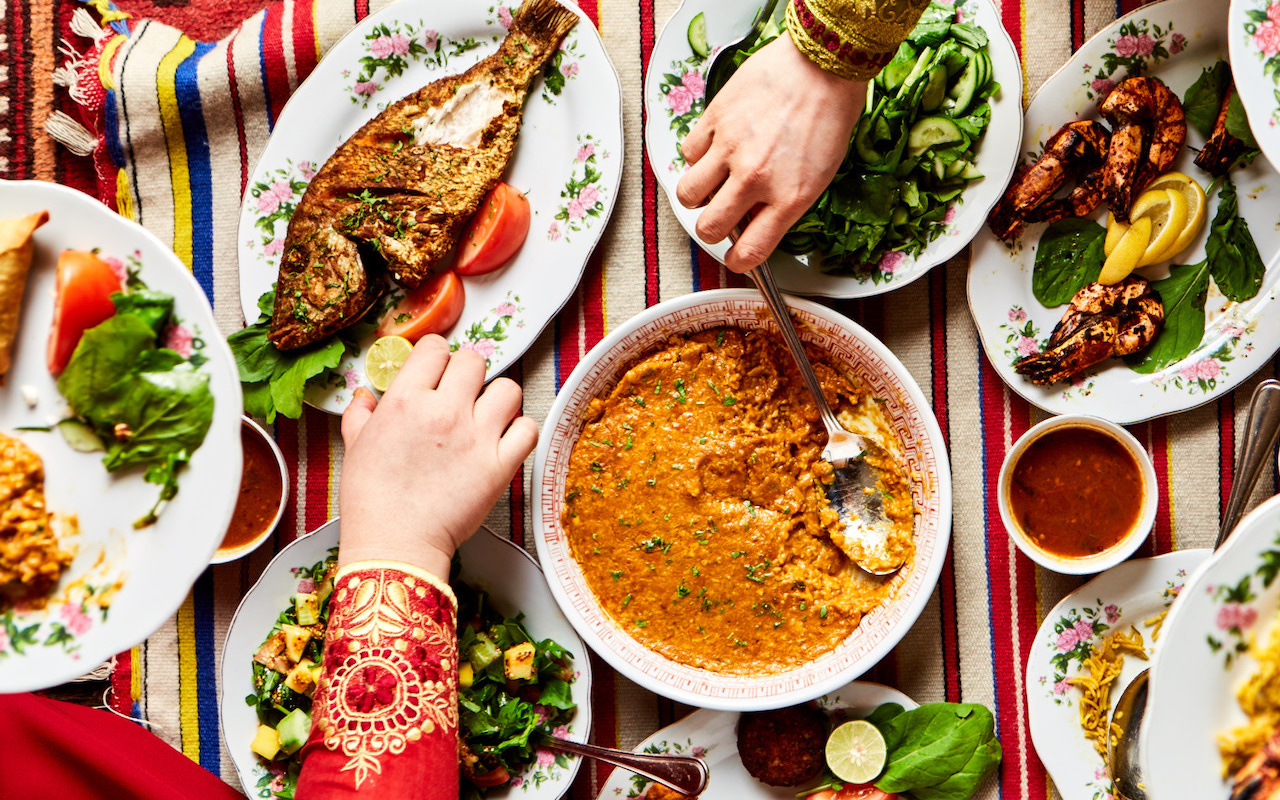
When guests would ask where they could have Emirati food, we’d send them to Iranian restaurants,” admits chef Uwe Micheel, director of kitchens at the Radisson Blu Hotel, Dubai Deira Creek. “I didn’t even know what Emirati food was – I felt a little bit ashamed,” the German-born chef continues, remembering when he first arrived back in 1993.
We are chatting at Aseelah, a Middle Eastern fine-dining restaurant at the Radisson Blu. The menu here features a blend of traditional Emirati fare such as machboos (fish and rice cooked in a rich onion and tomato broth) alongside more contemporary offerings such as camel sliders with toppings including date jam with halloumi. “We wanted to do a mix of traditional Emirati dishes and modern dishes… that, to me, is the taste of Dubai today,” he shares.
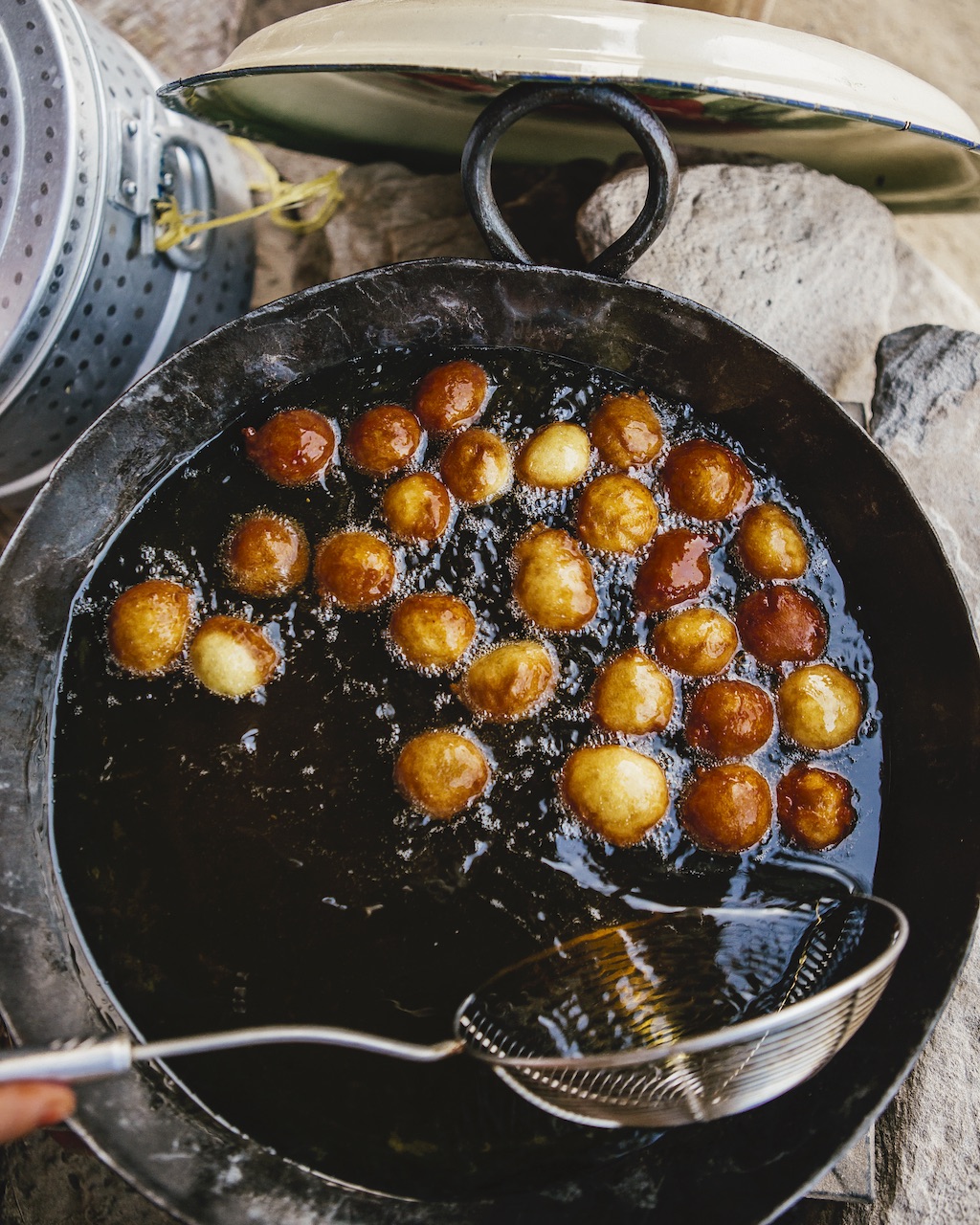
That blend is evident in dishes such as the grilled kibbeh, an Emirati-style meatball appetiser which I pair with a beetroot carpaccio. The crispy bulgur and minced onion shell reveals a delicious stuffing of spiced minced lamb that is perfectly balanced with the salad – thin slices of beetroot with wild rocket and labneh (a soft cheese made with hung yoghurt) that’s been flavoured with tahina (sesame paste).
In fact, Aseelah is the perfect spot to begin an exploration of this lesser-known cuisine. Born of the desert, traditional Emirati recipes – some thousands of years old – draw heavily from the region’s Bedouin heritage, shaped by the availability of core ingredients such as dates, wheat, lamb, camel meat and – specifically in Dubai – fish and shrimp.
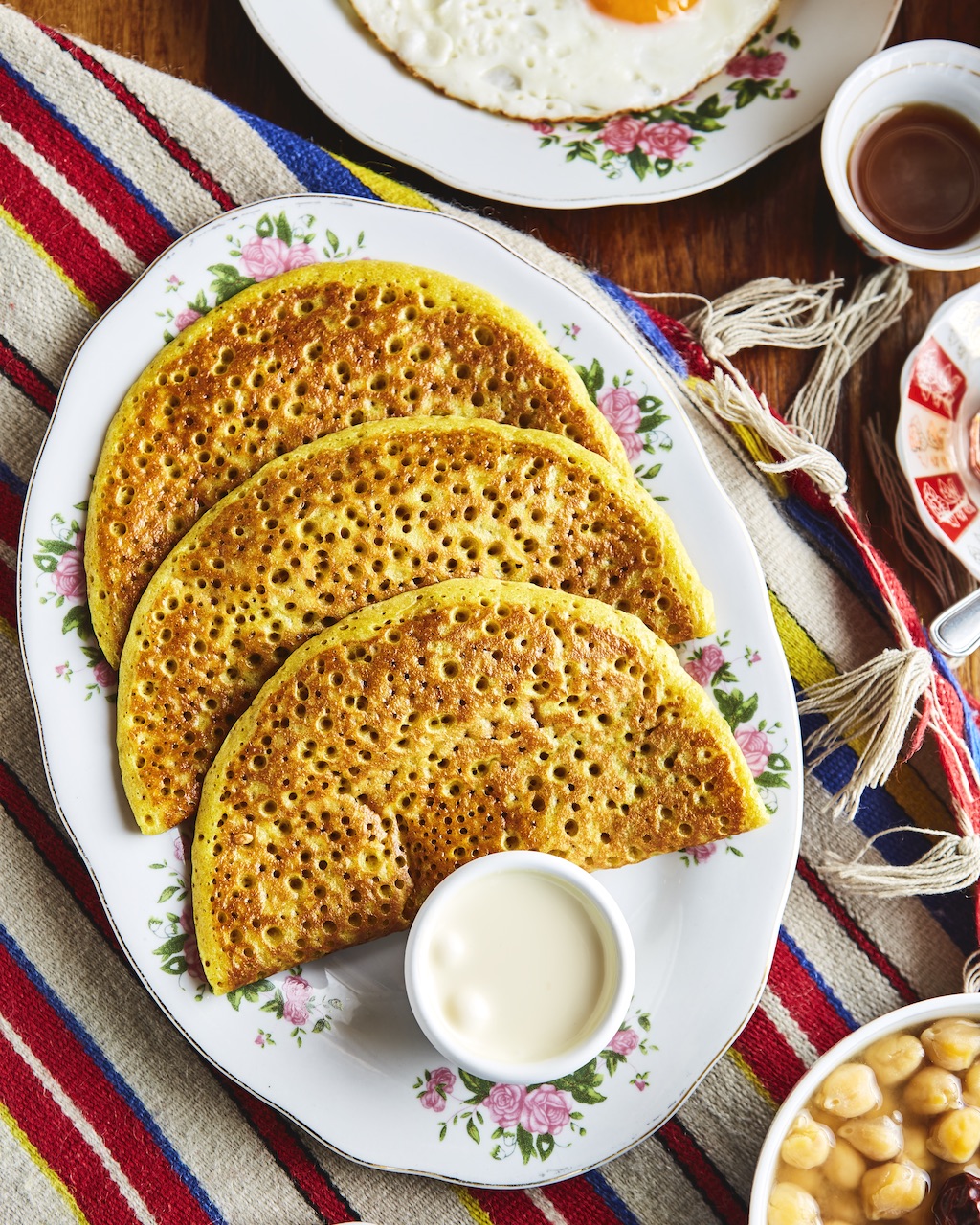
Due to other factors that come with a historically nomadic lifestyle, such as the scarcity of water, classic dishes have been simple, cooked in single aluminium pots over an open fire or underground, often for hours and sometimes even overnight.
A perfect example of a traditional one-pot dish also happens to be one of Micheel’s favourites on the menu at Aseelah. The margougat is a hearty orange-red stew of boneless chicken cubes and vegetables, such as zucchini, potato and carrot, cooked with Arabic bread in a gravy of red onions and tomatoes. Every spoonful is a symphony of flavours and textures.
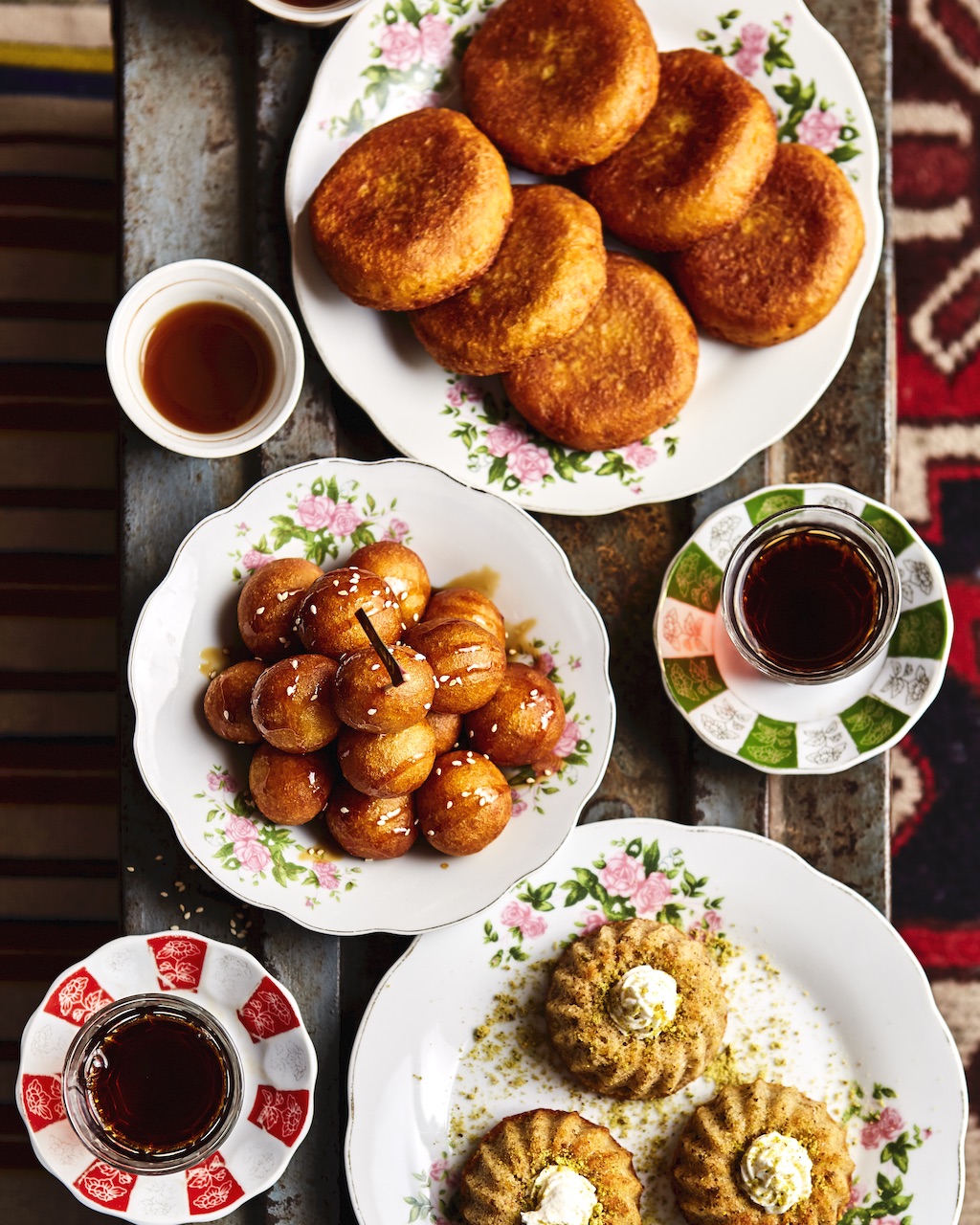
“Bezar is the key to Emirati cuisine,” Micheel says, referring to the aromatic mix of spices that is rubbed on the chicken. “It isn’t spicy, but it is packed with interesting flavours.” Bezar features in almost all Emirati dishes, from appetisers such as sambousa – a fried pastry stuffed with meat, vegetables or cheese – to mains like the margougat. “Everyone does it a bit differently, with closely guarded family recipes being handed down through the generations.”
That secrecy was one of the challenges facing Micheel when he tried to find out more about the cuisine of his adopted home. Despite the move from the desert to modern skyscrapers, the culinary wealth of what continues to be a very private society remained hidden away within homes, passed down orally.
Given the lack of recipe books in English, Micheel found himself forced to reach out to chefs well-versed in the cuisine, including those at the Zabeel Palace, the official residence of the Ruler of Dubai. “It took a long time for me to get inside an Emirati home kitchen for the first time,” recalls the mild-mannered chef.
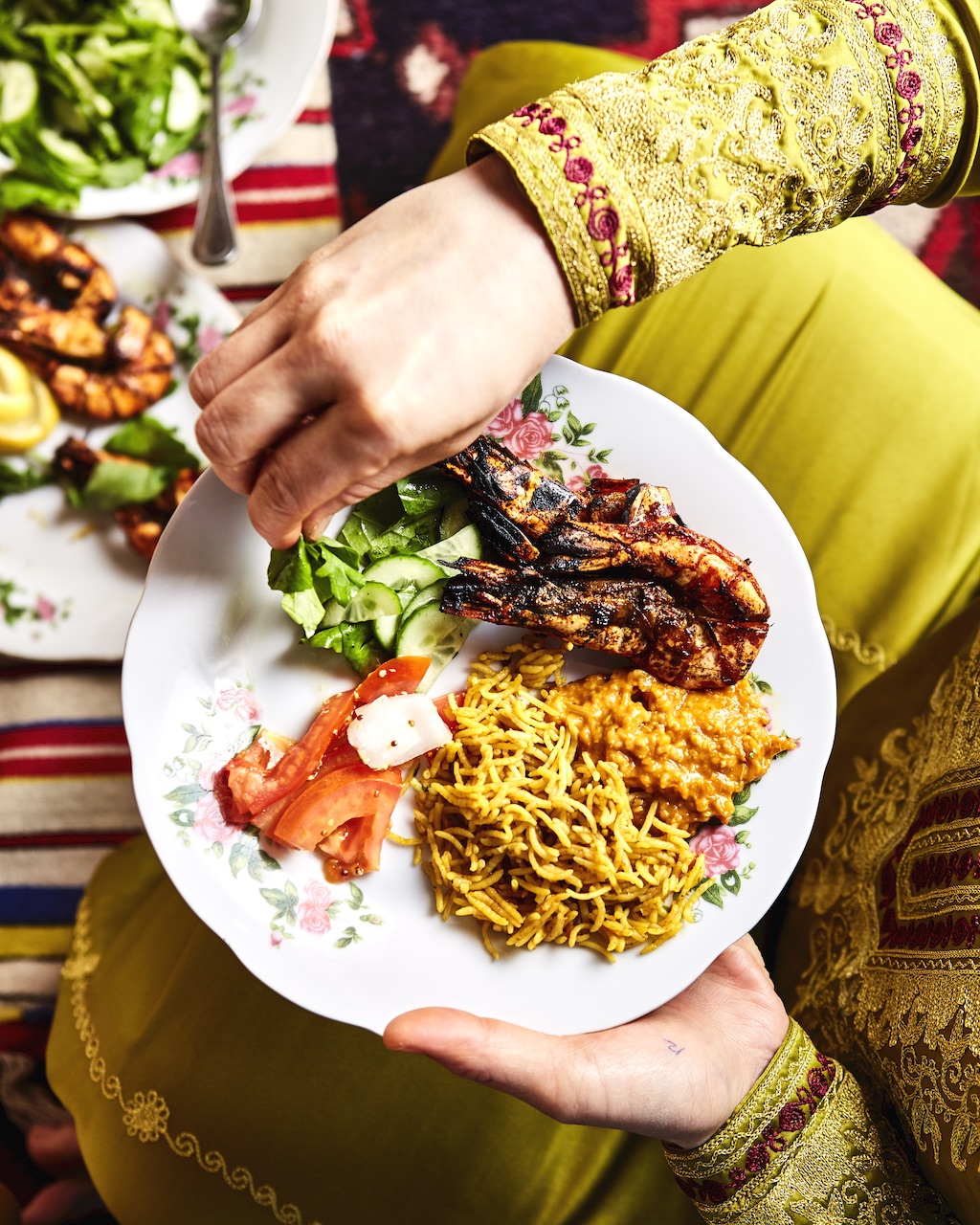
But it isn’t just foreign chefs who are championing Emirati cuisine. For Hashem Al Marzouqi, a burning desire to revive his lost cultural heritage led him to open Al Fanar Restaurant & Cafe back in 2011. There are now six outlets across the United Arab Emirates and Saudi Arabia, as well as a new London outpost.
“Our culture was fading out. I couldn’t even explain to my kids how our lives were growing up. There was no tangible reference point,” he says.
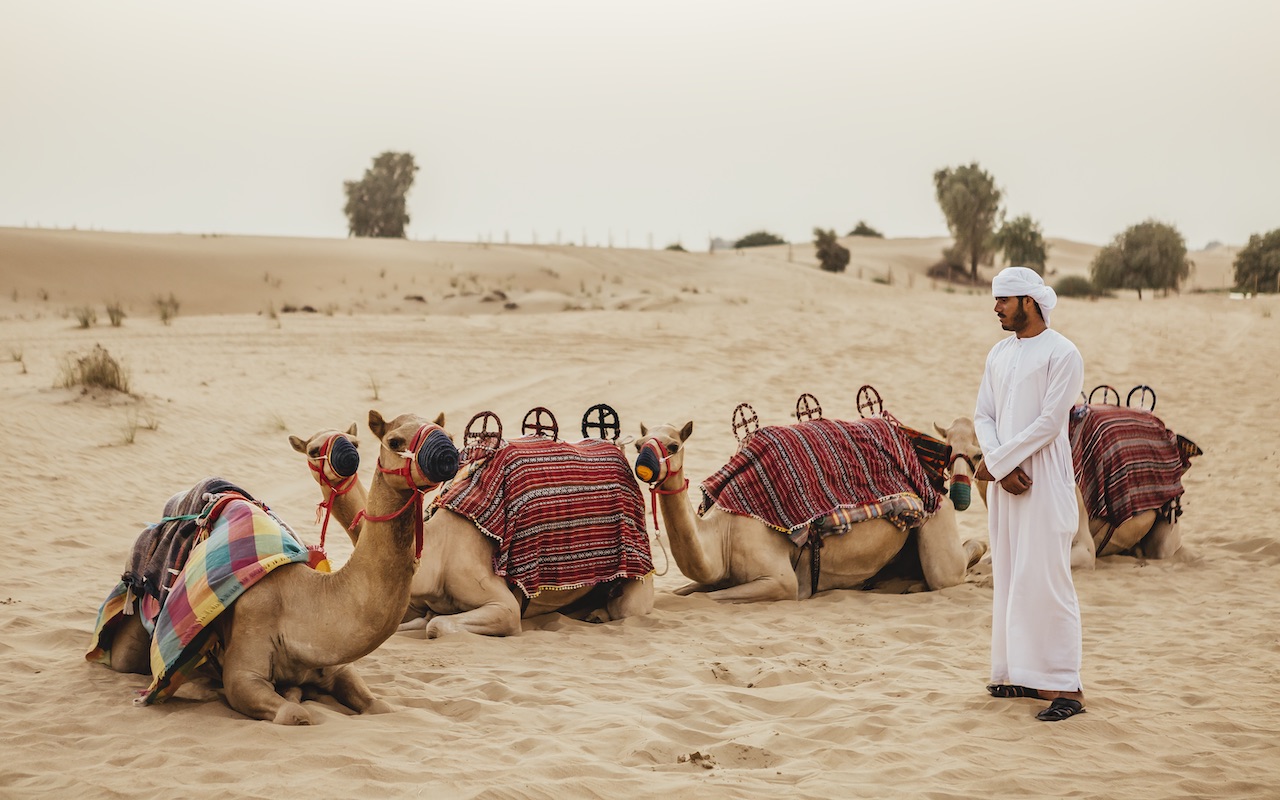
Stepping into the original Dubai Festival City Mall branch is like travelling back in time to the 1960s. Guests sit on wooden tables under latticed arches and in the shade of a central tree, in a courtyard lit by the warm glow of antique oil lamps, or fanar.
Photographs of everyday life in Dubai from the 1960s adorn the walls: A village woman with a large earthen pot balanced impossibly on her head gazes at me as I take a bite of the appetiser of crumbly koftat samak, deep-fried spiced fish patties.
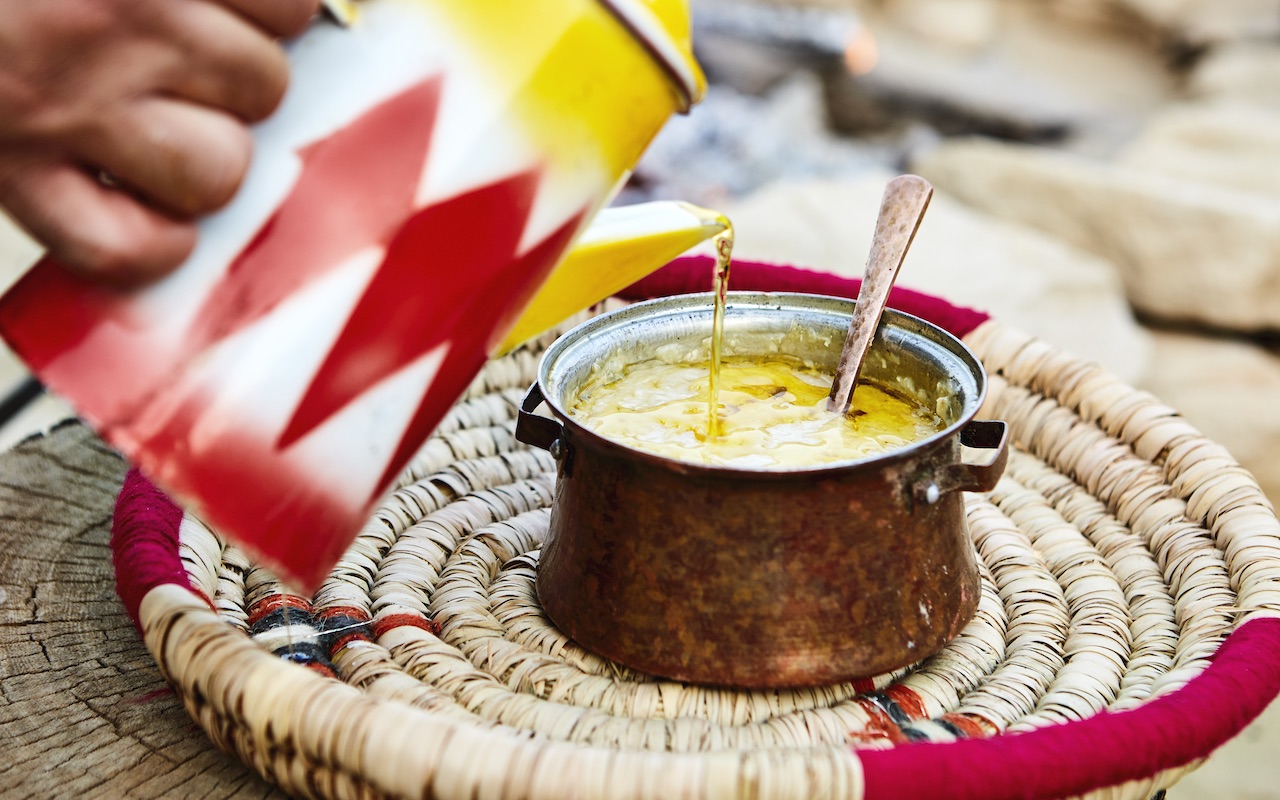
“Everyone, including my own father, told me that this was a crazy idea,” Al Marzouki says of the initial days of Al Fanar. Nevertheless, he was determined to champion the cuisine. To start, he began collecting recipes from people in his community, often knocking on neighbours’ doors. “I’d ask, ‘What does your mother cook well? Machboos? Give us the recipe,’” he recalls with a smile. “We went to the best source – the Emirati housewives and grandmothers.”
The wooden dhows that sailed to South India in the 1800s brought back not only spices, but also inspiration. An example is machboos, the Emirati rice dish that has roots in the Indian biryani, except for its use of bezar and loomi (dried limes), both unique to the Emirati version. My plate of machboos robyan (a shrimp version) at Al Fanar is glorious; two rows of shrimp over a generous portion of fragrant yellow rice slowly simmered in shrimp stock. A dried lemon, now soft from the heat, sits quietly as a garnish, helping lend a pleasant tanginess to the rice.
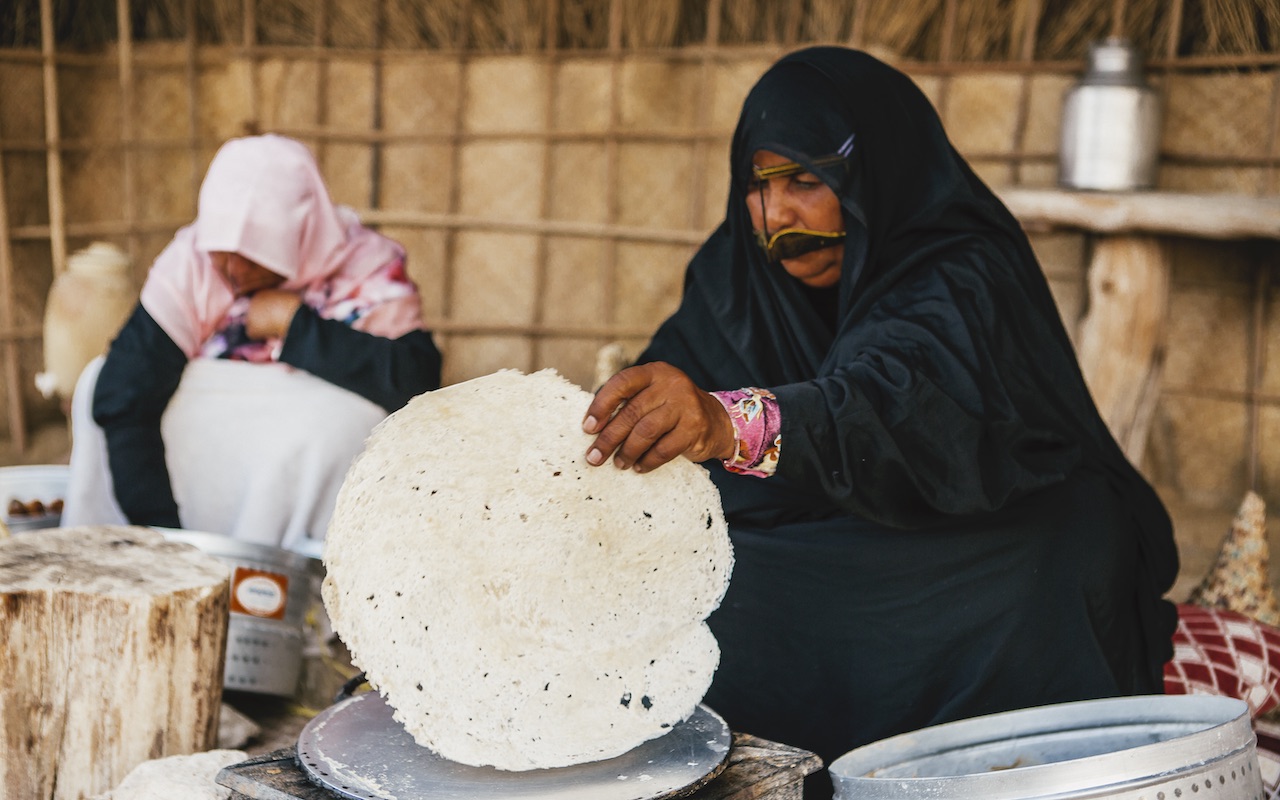
While Al Marzouqi expected interest from foreigners, he was surprised to find that the restaurant also struck a chord with Emiratis. He tells me of an Emirati grandmother who visited the restaurant with her grandchildren and recounts how she walked around, pointing to old photos to show them the kind of house she grew up in. “She told me – I have to kiss your head,” he recalls. “It made her feel like she’d been transported to her life in those days.”
Al Marzouqi is not happy to rest on his success at home and is committed to raising awareness of Emirati cuisine globally, as evidenced by the opening of the first Al Fanar outside the Middle East in Kensington, London, in March this year. “We’re representing the country now. It’s not just a business,” he states.
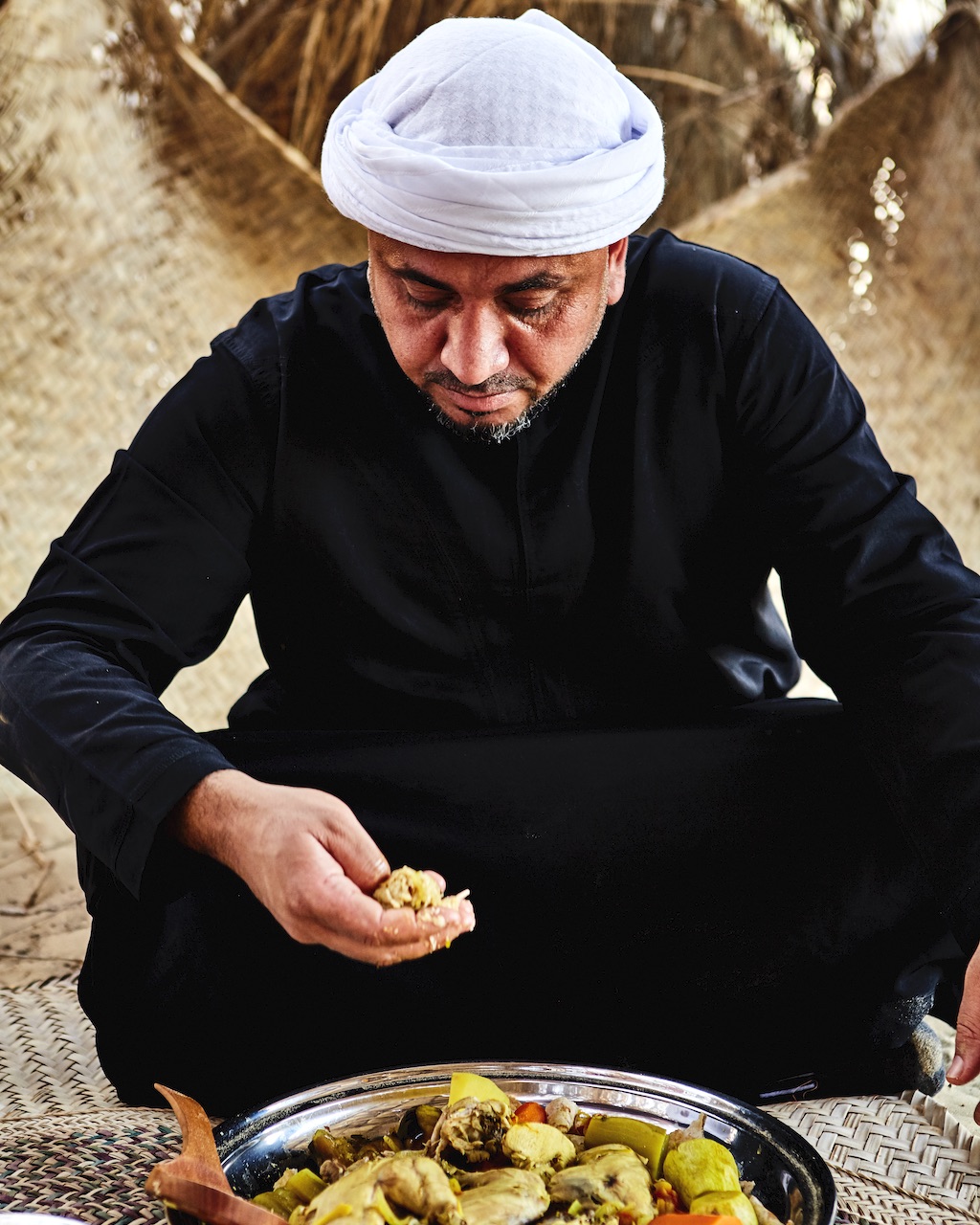
There are also newer restaurants that experiment with traditional flavours, such as Seven Sands, an upscale contemporary Emirati restaurant opened in 2015 by the hospitality and catering arm of Dubai World Trade Centre. Seven Sands’ sleek interiors contain intricate latticework lamps above ornamental mashrabiya screens and a wall depicting the history of Dubai.
With an Emirati twist on European fare – saffron lobster and camel tenderloin, for instance – and unusual presentations of classic dishes, it’s clear that they aren’t afraid to reinvent the cuisine. Take for example their chicken madrouba, a slow-cooked dish of chicken, coriander leaves, oats and bezar, usually served as a main course. At Seven Sands, they are also served as deep-fried croquettes.
My dining companion, nutritionist Noora Almarri, who works closely with head chef Abdullah Alshhadeh at Seven Sands, talks about her favourite dish on the menu here: jisheed sambousa, or fried pastry stuffed with spicy minced shark – yet another creative take on the traditional dish of rice served with shark. I am pleasantly surprised by how tasty the turmeric-spiced meat is, along with the perfect crunch of the pastry, lightly dipped in chilli sauce.
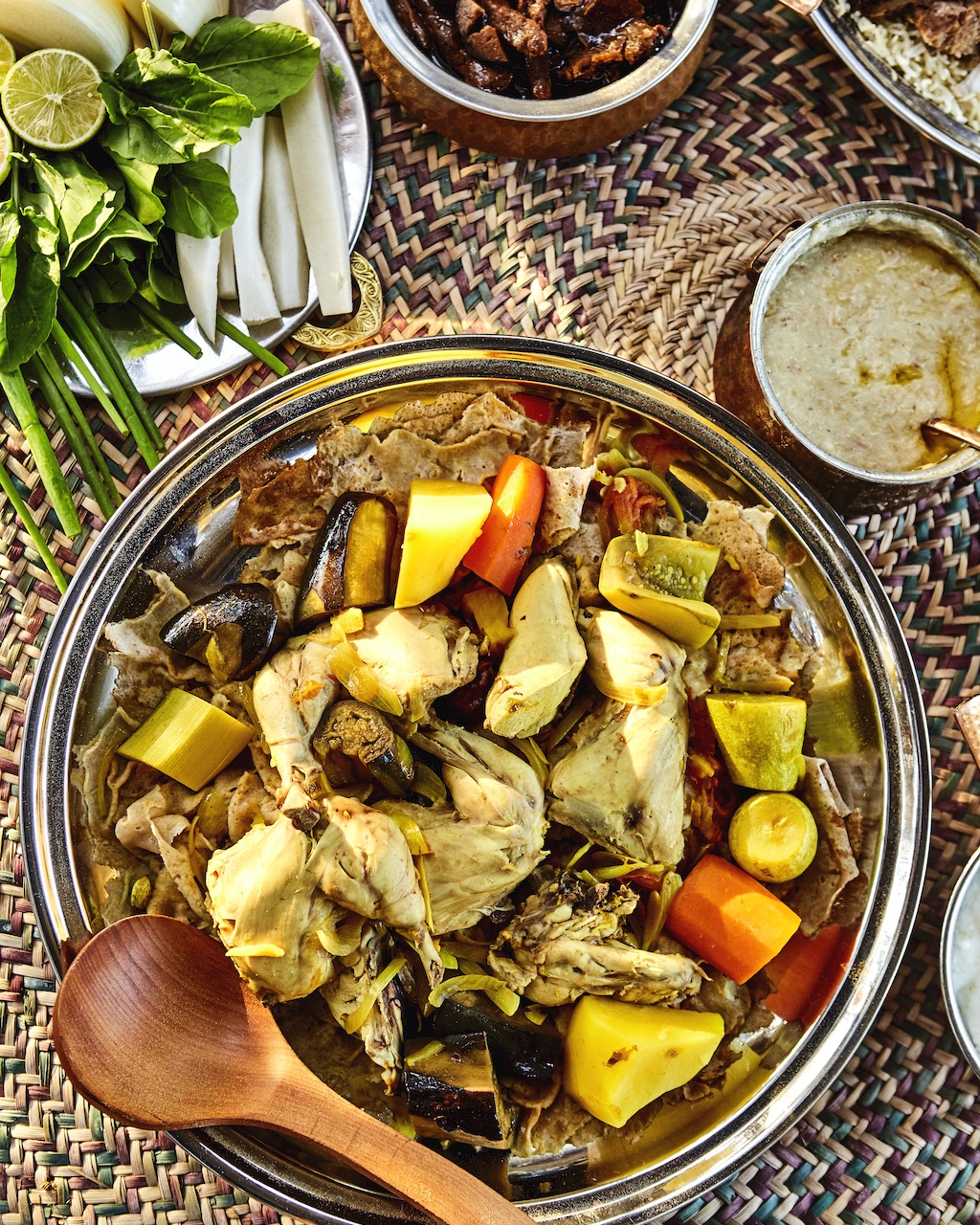
While we eat, she tells me about her family’s tradition of preparing harees, a main dish of lamb and wheat mashed together, on the UAE’s National Day (2 December), at their farmhouse. “It takes over an hour and you need a lot of strength to do it, so we take turns to see who can mash it the best. It’s never me – I might be stronger than my grandma, but she can mash harees better than me.”
But while traditional cuisine is appreciated at home, it’s a different story for the younger generation of Emiratis dining out in the city. “When I go out, I like to try something new,” Almarri says, explaining why many Emirati restaurants, such as Ana Restaurant, SIKKA Café and Logma, serve more contemporary takes on the cuisine. Indeed, it isn’t unusual to see tables filled with young Emiratis, Instagramming and tasting their way through bold and artistic-looking reinventions of classic dishes.
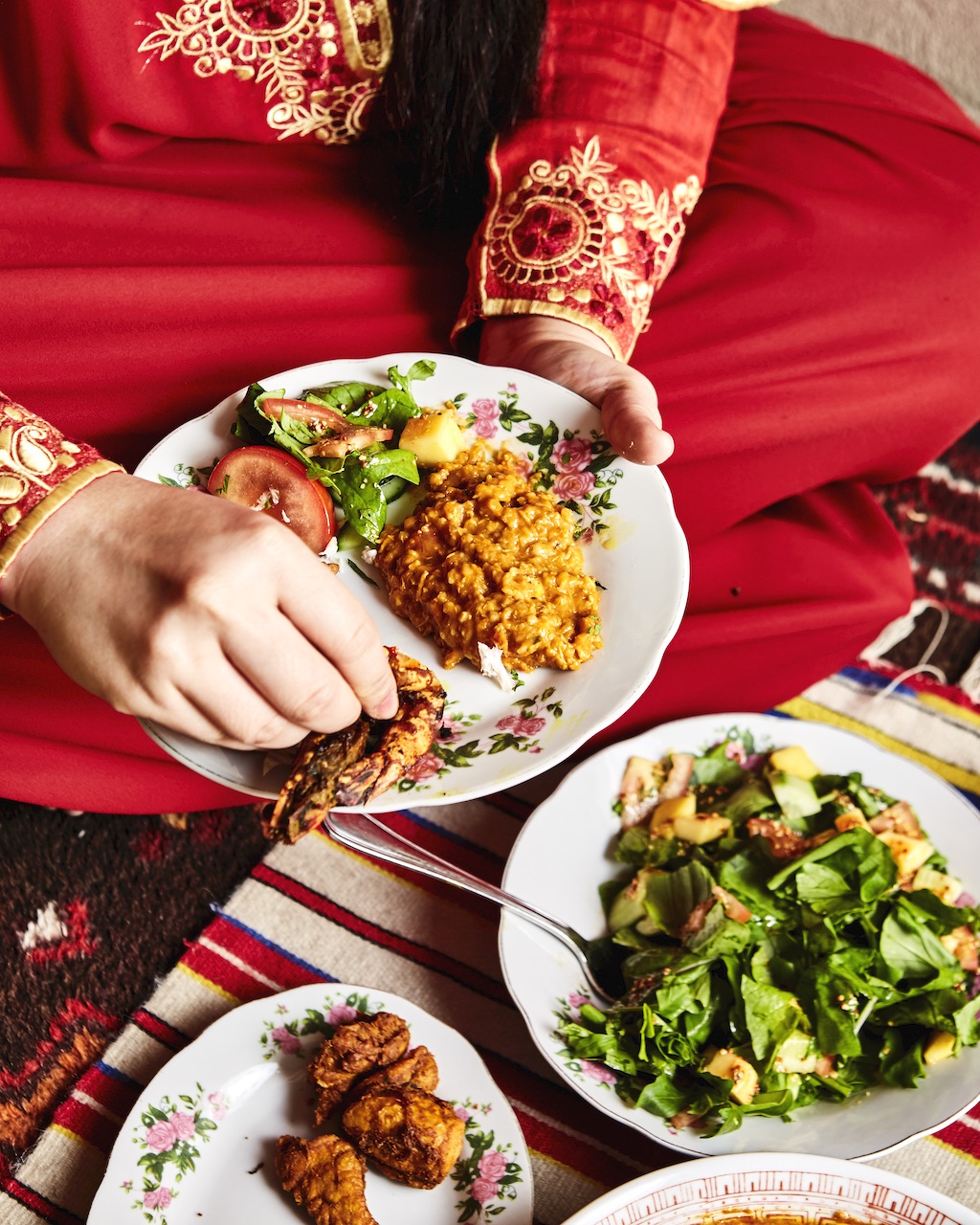
Overall, things have come a long way since the 1990s, when Micheel struggled to point his hotel guests towards authentic local food. Through restaurateurs looking to resurface forgotten recipes; young entrepreneurs eager to share local culture with visitors; and forward-thinking establishments putting new spins on old dishes, Emirati food is finding its place in fast-paced Dubai’s evolving dining scene.
3 restaurants with a modern take on Emirati cuisine
Logma
This popular restaurant offers a taste of the region with a cool, contemporary twist. One of the menu standouts is Logma Benedict – poached eggs with tomato and onion, served on local khameer bread and topped with hollandaise sauce, local spices and herbs.
HumYum
This spot serves comfort food laden with Khaleeji (Gulf Arabic) nostalgia: steaming cups of masala tea with chebab (pancakes) and khubz rigag (crepes) with fillings such as cheese with Chips Oman; cheese with Nutella; or honey and zaatar.
Ana Restaurant
Expect a bold take on Emirati cuisine. The traditional main dish harees – a porridge-like concoction of mashed wheat and lamb topped with ghee – is presented as an appetiser. There’s an Emirati version of pizza, and a camel burger topped with date sauce.
Try dining in the desert
Experience Emirati cuisine in an unforgettable setting by taking part in the Al Marmoom Bedouin Experience dinner with Platinum Heritage. The tour involves a camel caravan to a Bedouin village, where you learn about their customs and everyday lives and enjoy cooking demonstrations. In the majlis – traditional seating, decorated with carpets, cushions and often low seats – Emirati hosts share stories over a typical Bedouin dinner.
Think tanoor lamb (oven-cooked lamb with rice and ghee); thareed (chicken and vegetable stew); lahm hashi (camel meat with truffles); and crispy luqaimat, deep-fried flour dumplings drizzled with date syrup and topped with sesame seeds, served on mats of dried palm leaf. Cultural performances and an astronomy session follow over cups of gahwa (Arabic coffee) and spicy cinnamon-infused chai.
Singapore Airlines flies to Dubai daily. To book a flight, visit singaporeair.com
SEE ALSO: 3 things to know about Dubai’s new Coca-Cola Arena
This article was originally published in the December 2019 issue of SilverKris magazine
The post Secret no more: Emirati cuisine is having its day in the sun appeared first on SilverKris.
from SilverKris
No comments:
Post a Comment